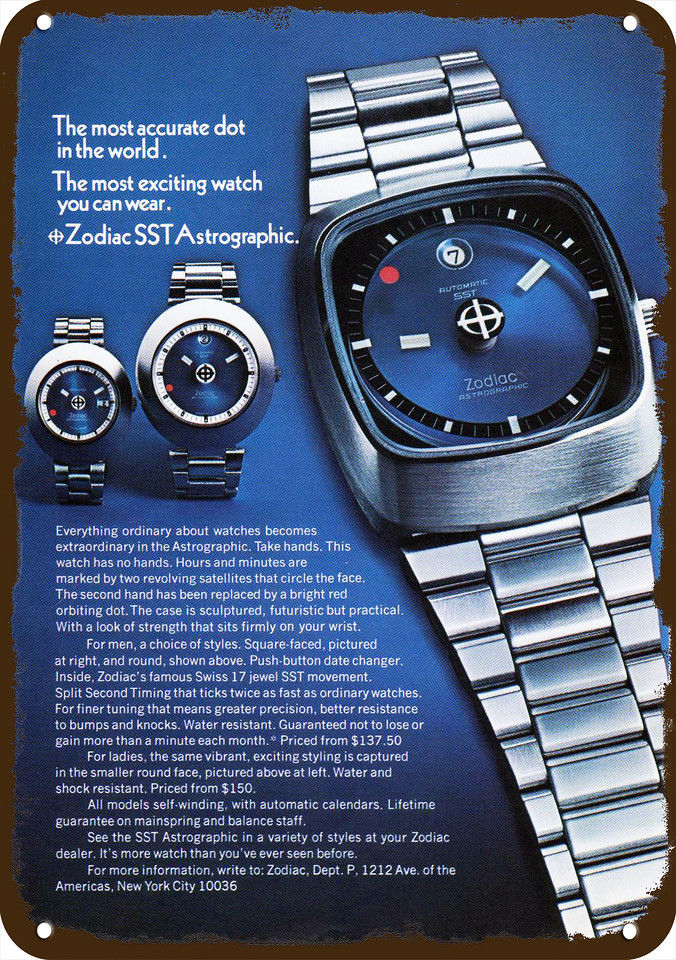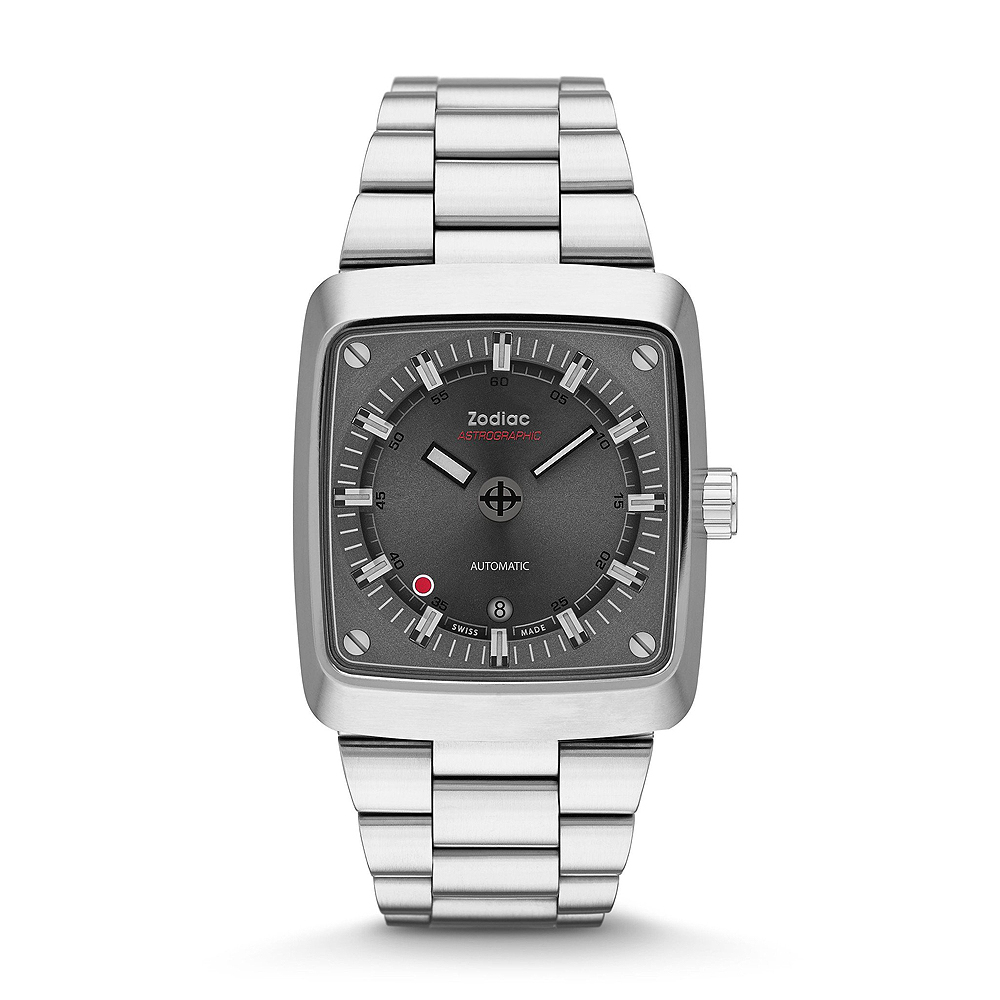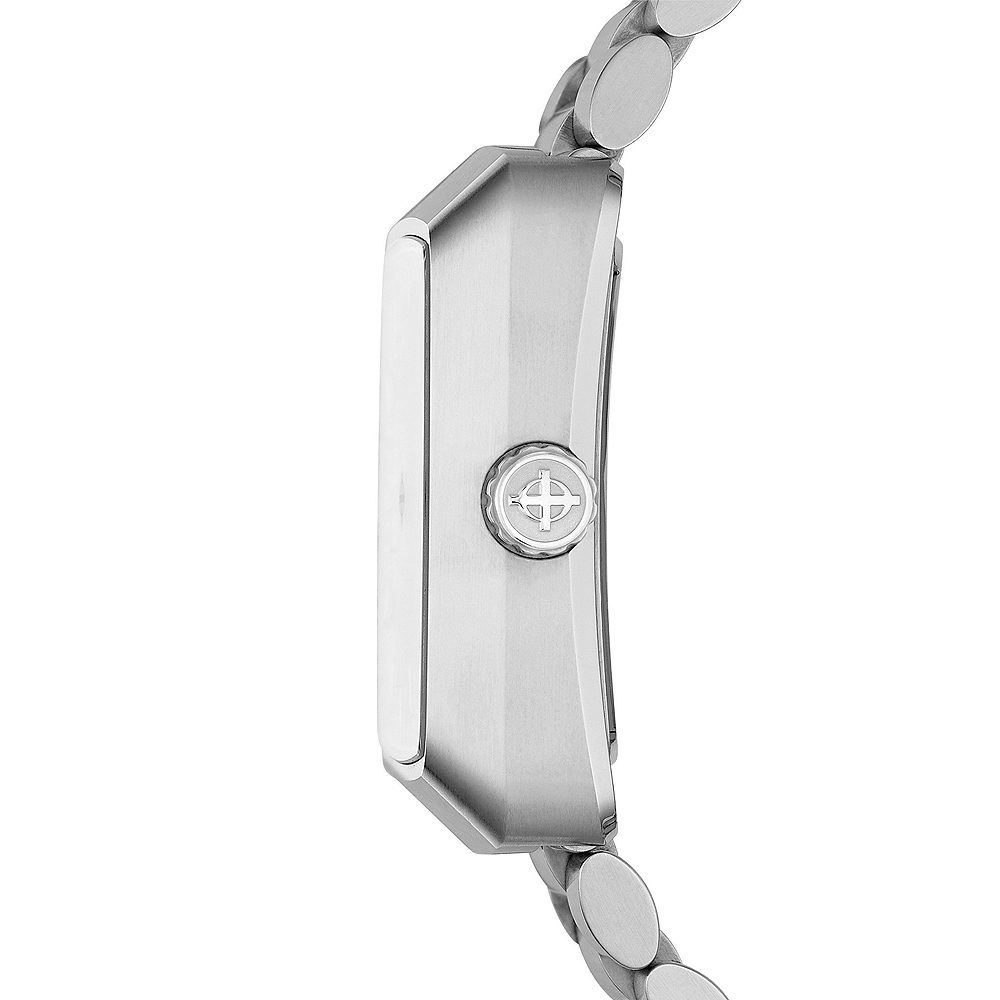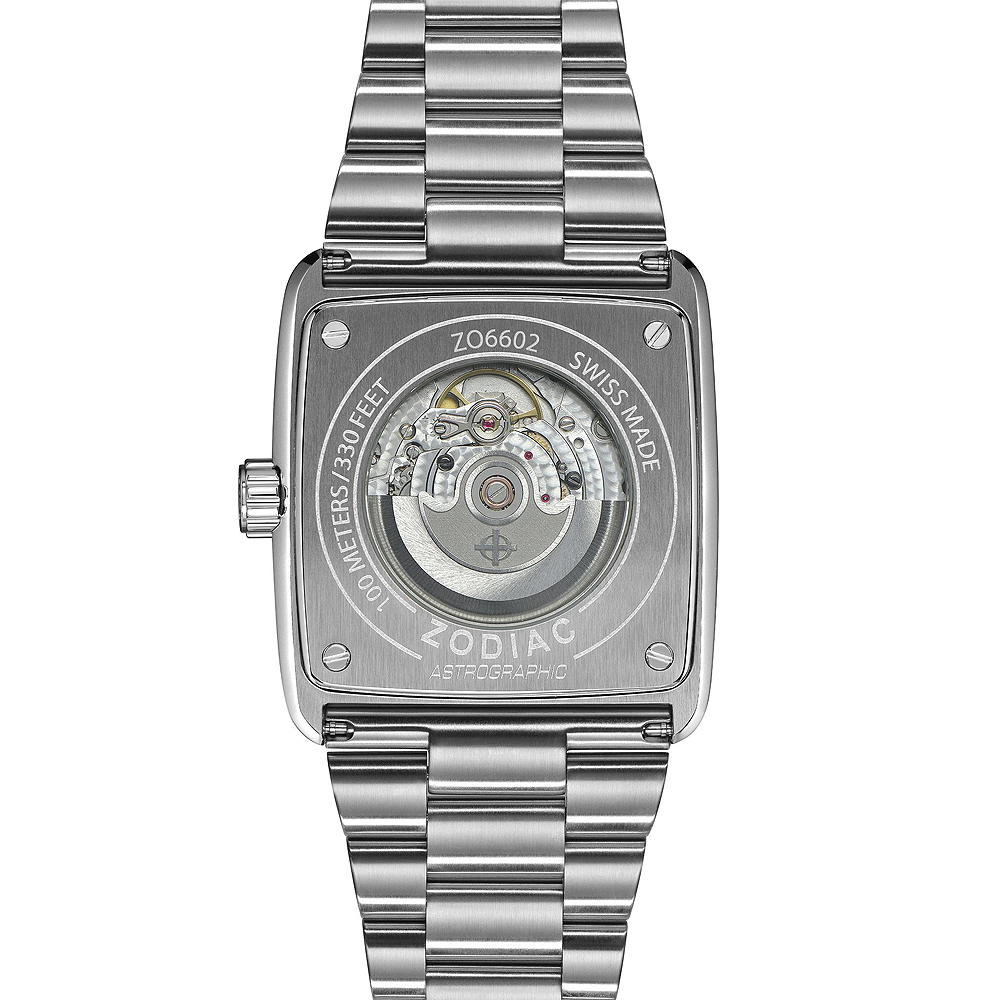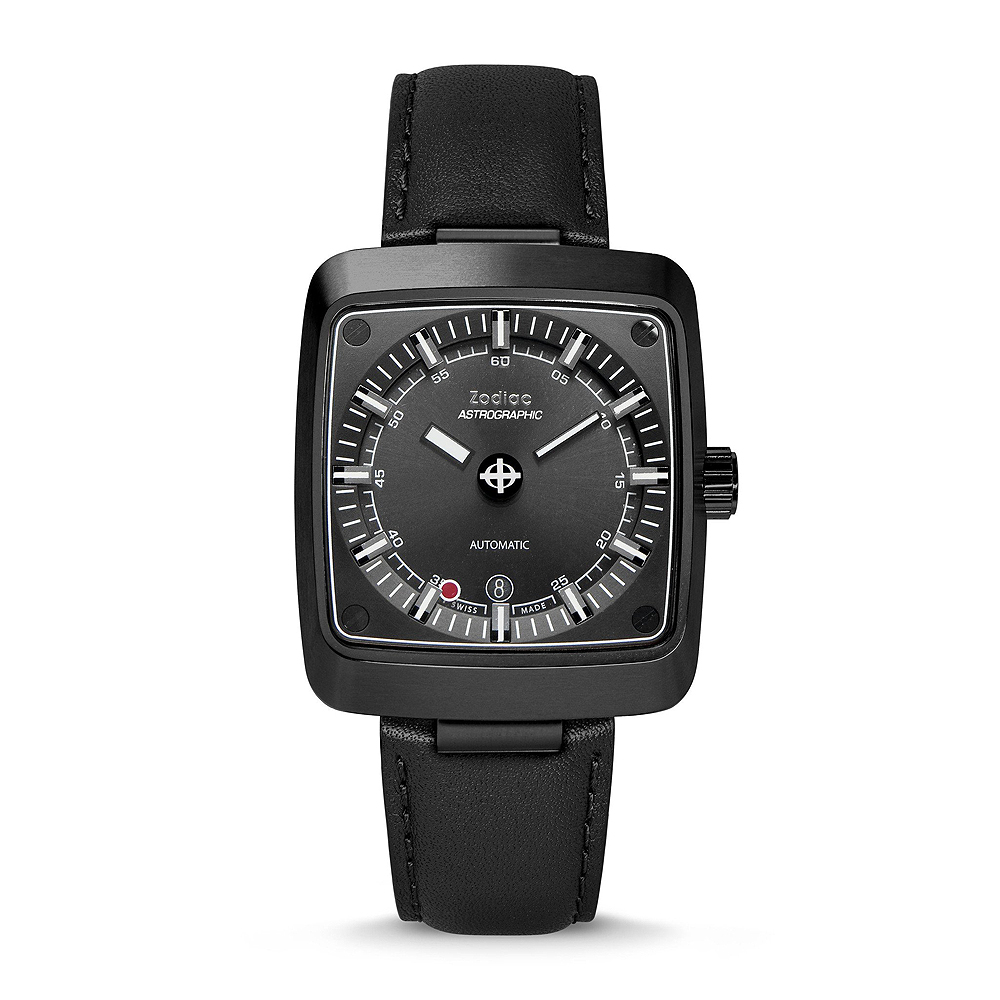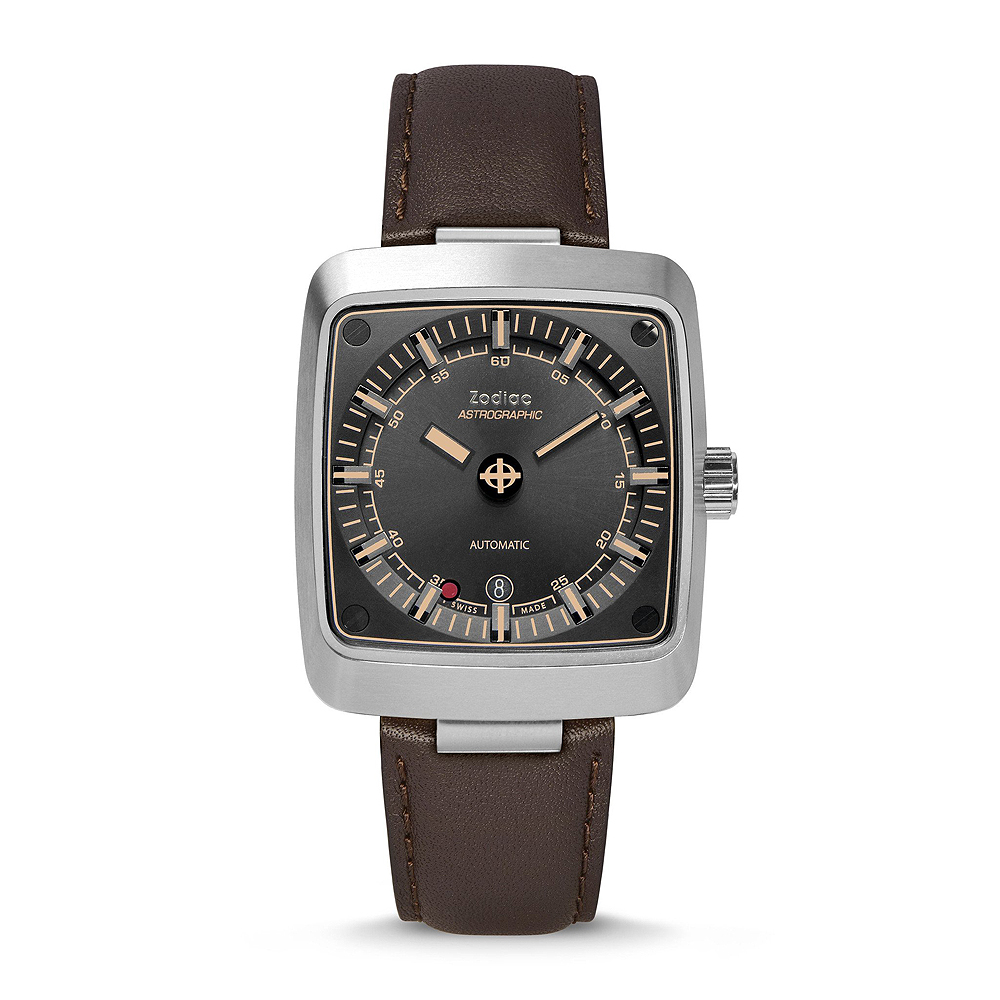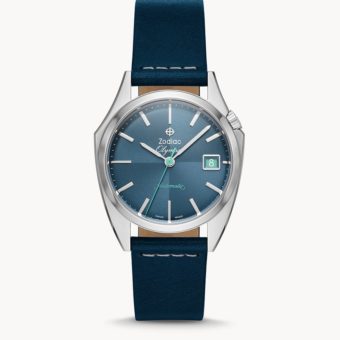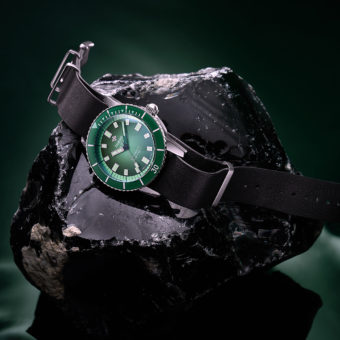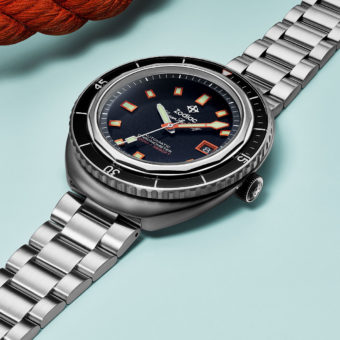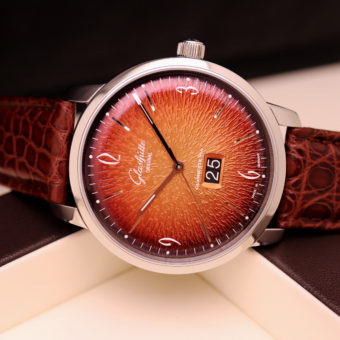While many brands have bolstered their historical collections in recent times, few if any brands have done so like Zodiac. The Swiss brand, with its Fossil-owned backing and archives of interesting pieces from the mid-20th century, has built its entire modern identity, and most of its collections, upon its vintage heyday. Previously on “Vintage Eye,” we’ve covered two of Zodiac’s most popular historical pieces, the skin-diving Sea Wolf and the deep-sea-diving Super Sea Wolf. This week we turn to a lesser known, yet still strikingly retro watch, the mystery-dial Astrographic.
The original Astrographic, known as the Astrographic SST, had a space-age design stemming from 1969 (vintage ad above, via eBay). These watches, first produced in sunburst blue and white most, and commonly using rectangular cases with hooded lugs, were noted for their futuristic features. With stacked transparent disks moved by outer gear trains and printed with rectangles and circles on them to resemble hands, the indicators produce an ethereal “floating” appearance on the dial— thus earning the “mystery dial” designation. The Astrographic wasn’t the first watch to host this feature, but it likely is the most sporty model to have done so. The “mystery” dial is more frequently seen in dressier watches, many produced by Cartier, like the Rotonde de Cartier Skeleton Mysterious Double Tourbillon Watch, which debuted at SIHH 2018.
Zodiac’s modern Astrographic keeps many of the primary features seen in the vintage models, yet has clearly been updated for a contemporary audience. With a thick, 45-mm rectangular steel case the brand is describing as “barrel-shaped,” a stand-alone signed crown, and an integrated bracelet, the piece is unlike anything else on the market today. The dial, punctuated at each corner by prominent screws to secure it, is two-tiered: on the higher level are the applied hour markers, while the lower level features a sunburst white or black disk with a circular date window towards the bottom. Between the levels are the mystery indices “floating” on their sapphire disks and rotating via an outer gear train hidden from sight, with a slender rectangle displaying minutes, a wider rectangle marking hours, and a peripheral red circle ticking away the seconds.
The watch is powered by the Fossil Group-developed automatic STP 1-11 caliber, slightly modified to account for the unique dial; it’s capable of a 44-hour power reserve and is visible through a sapphire caseback. Currently the Astrographic is available in two continuously produced models, one with a white dial and the other with a black dial, although Zodiac offers two limited-edition pieces available with either a PVD-coated case or with faux-patina dial accents and a leather strap; the brand did offer a more historically accurate blue-dialed model, although this watch has been sold out for some time. The PVD model is priced by the brand at $1,995, while each of the others are offered at $1,295, with a two-year warranty.
Comparing the vintage model to the contemporary one, it’s clear that Zodiac worked to develop an homage while still aiming the modern collection at a non-space-age audience. The rectangular case and mystery dial are still the central focuses on the piece, as are smaller details like the centered Zodiac logo, red seconds index, and circular date window. Through and through, the modern piece exemplifies a retro-futurism uncommon on watches made since the 1970s, and the roots of its vintage predecessor are easy to observe.
Still, the contemporary Astrographic is much more than an inspired homage. With its screw-dial, more angular case, bottom date window, outlined indices, and obvious refinement throughout — the elements of the vintage model have been transformed into a thoroughly modern template. Add to these the integrated bracelet, as compared to the vintage model’s hooded lugs (a style that arose after 1972, made famous by the Audemars Piguet Royal Oak), the newly designed applied hour markers more consistent with the rest of the brand’s modern collections, and the sapphire caseback, the piece becomes much more its own in today’s context rather than simply being a copy of a the relatively unsuccessful 1969 model.
Much has changed since the Zodiac Astrographic’s initial release: the height of the Space Age has passed, “futurism” is now part of history, and the boundary-pushing designs of years past are now funky novelties rather than key players in the watch industry. And here Zodiac stands —having fallen with the onset of quartz, only to rise again as a heritage brand under Fossil. The modern Astrographic in this context represents an interesting proposition: a watch that commands prominence in neither historic or contemporary realms, yet still providing a distinctive appeal at a relatively accessible price to anyone inspired enough to wear it.
For the most recent article in the “Vintage Eye” series, in which we compare the Siduna M3440 Professional Uni-Compax Chronograph to its historical inspiration, click here.
Caleb Anderson is a freelance writer with a primary focus on vintage watches. Since first discovering horology, he has garnered extensive knowledge in the field and spends much of his time sharing his opinions among other writers, collectors, and dealers. Currently located near New York City, he is a persistent student in all things historical, a writer on many topics, and a casual runner.

